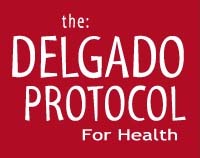How to Safely Increase Testosterone Levels in Women

Testosterone is thought of as a male sex hormone but it’s essential for both male and female health. While women require lower levels of the hormone than men, it is necessary to balance energy levels, mood, cognition, and sex drive; and it helps maintain muscle and bone mass. If your testosterone levels drop too low, you will suffer unnecessarily with cumbersome side-effects. Read-on to discover how to identify low testosterone levels, and how to increase it naturally.
Testosterone Basics
Testosterone is part of a group of hormones called androgens, which are made in the ovaries and the adrenal glands. Testosterone levels peak for women in their early 20’s, and by menopause, women typically have half as much testosterone as they did during their peak years. Aging, oral contraceptives, and low progesterone are considered the three-main causes of low testosterone.
Identifying Low Testosterone
Some common signs of low testosterone levels in women include: fatigue, weight gain or trouble losing weight, reduced muscle mass, mood swings, loss of libido, anxiety, depression, trouble concentrating, and hair loss. If you identify with these side-effects you should have your testosterone levels measured. A straightforward blood test can tell you exactly what’s going on inside your body, and point you in the direction of what you need to do next. You can purchase a kit that tests for free and total testosterone, and 7 additional hormones that are essential for female health here: https://unitynaturals.com/product/female-quick-check-hormone-panel/. If a deficiency is identified, know that there are options that extend into the natural realm and that it’s not necessary to suffer with any imbalances.
Testosterone Replacement Therapy
Testosterone replacement therapy (TRT), is often the go-to method for increasing testosterone, but there are a variety of natural ways to accomplish the same thing without resorting to TRT. Generally, it’s best to balance hormones through natural means if possible since it tends to be a more sustainable choice with fewer risk factors. The side-effects of TRT might include: acne, skin rashes, increased heart disease risk, hair loss, voice deepening, and/or facial hair growth.
How to Increase Testosterone Production Naturally
It is possible to avoid the side-effects associated with TRT and to jump start testosterone production naturally. One way to physically boost testosterone levels is to increase exercise. It’s important to incorporate both strength training to build lean muscles, and high-intensity interval training to jumpstart the metabolism. Having sex is another way to boost testosterone naturally. While sex can be a form of physical exercise, the testosterone boost comes whether or not the sex is very active. All of the hormones get a boost when a woman has sex, and the effects are even more pronounced with early morning and frequent sex.
Natural Supplements That Can Help
As far as natural supplements go for increasing the levels of testosterone in women, zinc and Avena sativa are common suggestions. Research shows that low levels of zinc in the body leads to both an increase in estrogen receptors and a decrease in androgen receptors. It’s crucial to have enough zinc for the body to keep things balanced. If a woman is low in zinc she can take it in a supplement form, taking care not to take it at the same time as a calcium supplement, which can decrease the absorption. Avena Sativa is another supplement option, which is an herbal remedy that’s been used for hundreds of years for balance the hormone levels. Testro-Vida is a potent testosterone boosting supplement that contains zinc, Avena Sativa, and a proprietary blend of additional hormonal-health-promoting herbs: https://unitynaturals.com/product/testro-vida-pro-2/
Additional Testosterone Boosting Techniques
Your diet plays a tremendous role in your testosterone levels and the ideal diet is comprised primarily of whole, plant-based, organic, foods. Eliminate sugar, processed foods, vegetable oils, and alcohol. Increase your vitamin D levels by getting 15 minutes of sunlight exposure daily, or if you live in a climate where that is not possible, take a vitamin D supplement. Sunlight exposure is dually beneficial because bright light exposure increases levels of luteinizing hormone (LH), which is required to produce testosterone. Finally, reduce your exposure to xenoestrogens, which are environmental compounds that act like estrogen in the body. Some of the most common xenoestrogens to eliminate include: plastic food and beverage containers, candles, pesticides, and non-organic cosmetics, fragrances, personal care and cleaning products.
References:





